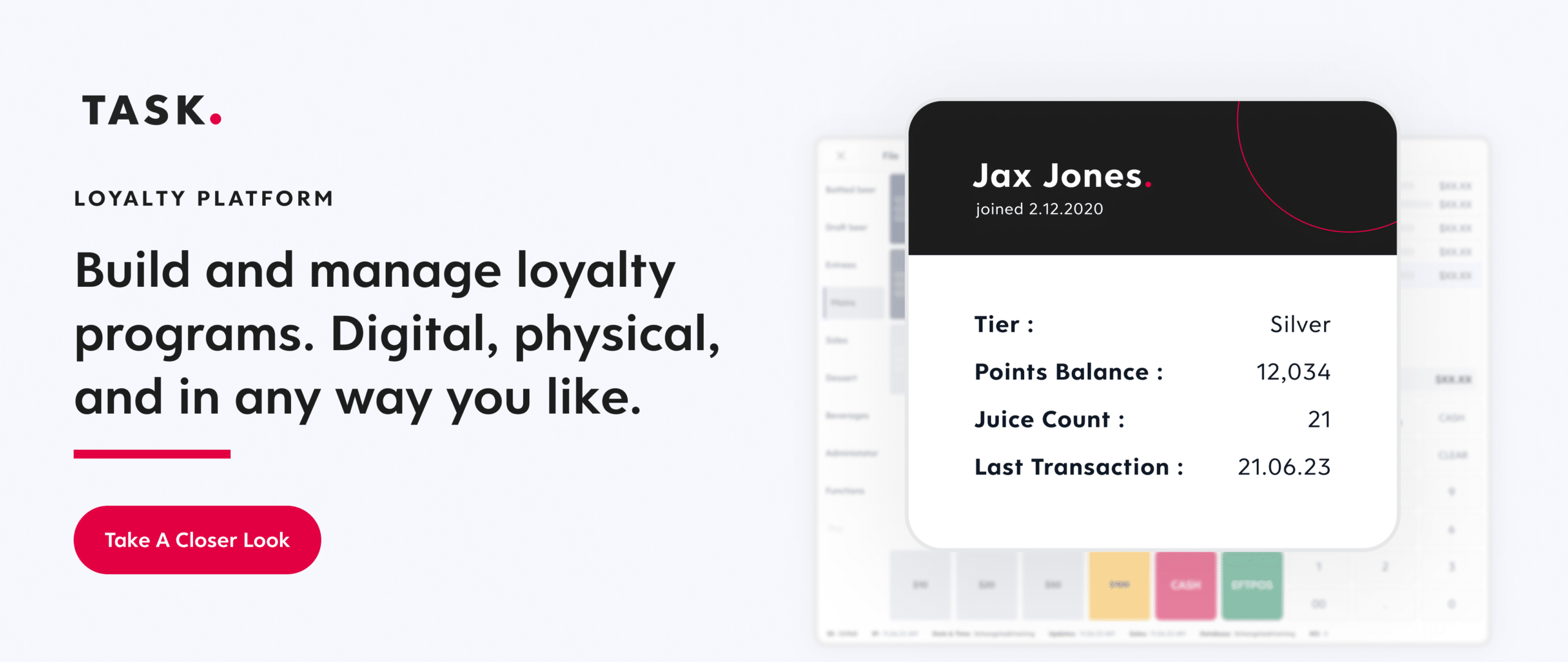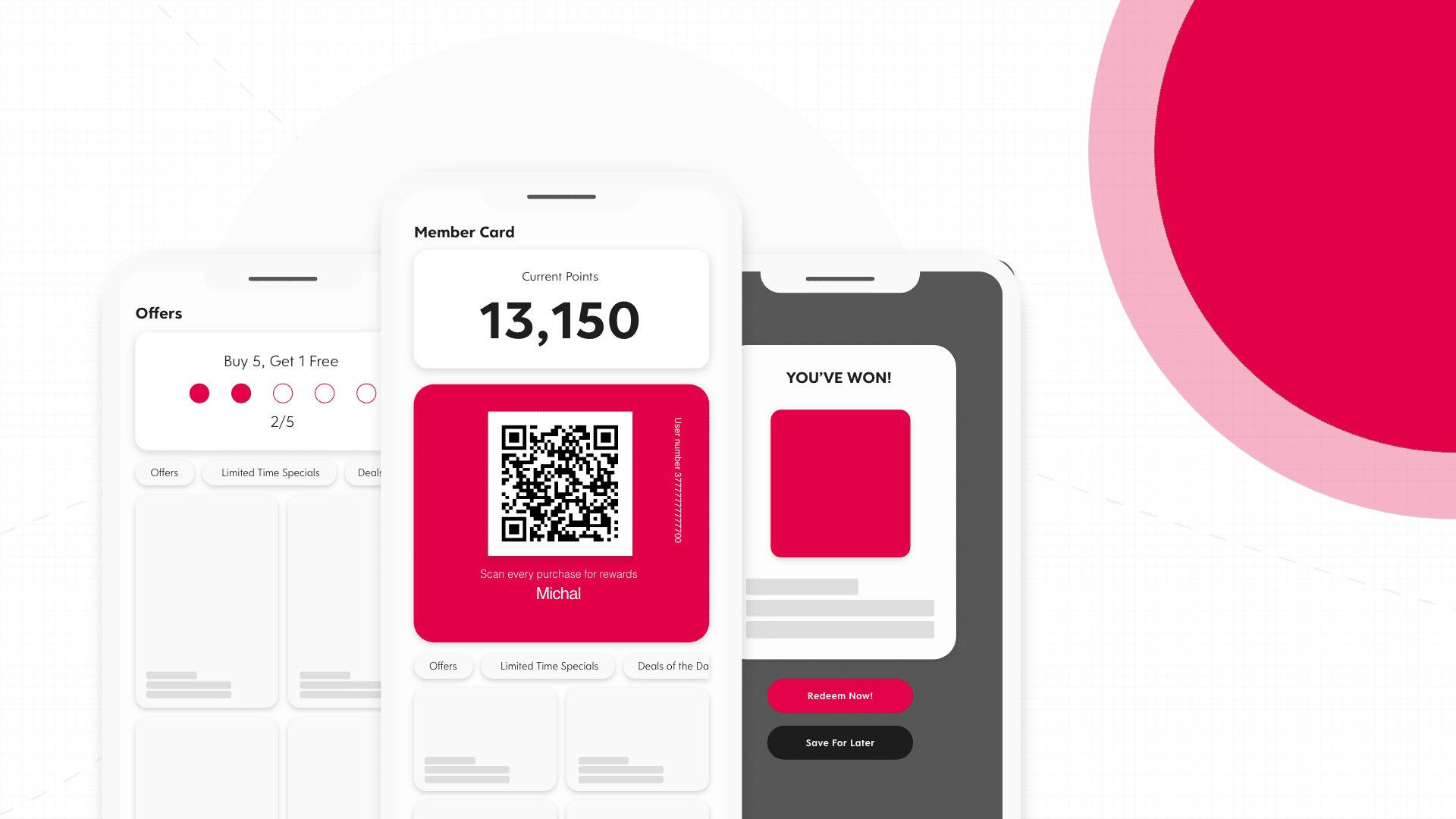It’s a whole new world for hospitality businesses, flooded with competition, higher customer demands, and a major transition into the digital marketplace. Customer loyalty programs have long been a key tactic for brands to encourage repeat purchases and build value from existing customers. Amidst so much transformation, however, loyalty programs need to adapt to stay relevant.
In today’s omnichannel environment, QSRs should expand their loyalty focus into digital touchpoints. If you’re after the success of brands like McDonald’s or Starbucks, then you’ll need consistent and robust loyalty program software that considers the wider customer journey across every point of service.
Why a Digital Loyalty Program?
Every QSR should have its own loyalty program to actively retain and engage customers beyond their first visit. Reward programs are the segue from customer acquisition to retention. Given that attracting new customers (as opposed to retaining an existing one) costs 5 to 25 times more for brands, it’s important to get this part of your customer journey right.
A digital customer loyalty program, implemented successfully, can lead to:
- Higher customer retention
- Better customer engagement
- More repeat customers
- Increased customer lifetime value
- Enhanced customer experiences
Since the major shift in buying trends following the pandemic, it is now crucial that leading QSR brands invest in their digital customer experiences – and that absolutely includes loyalty programs. There’s a major disconnect right now, with many brands lagging behind. While 70 percent of customers prefer to manage loyalty through mobile apps, only 26 percent of brands offer a convenient solution for them.
The bottom line is this: if you want to increase your customer lifetime value in today’s world, you need a digital loyalty program.
Why Your QSR Needs a Loyalty Program
Building customer loyalty is the single most important aspect of retaining business and boosting profits in the long run.
What Makes a Successful Digital Loyalty Program
Here’s where keeping up with today’s demands can feel daunting to marketers and brands in the midst of their digital transformation. While there are many routes that can lead to success, the most important part of any loyalty program is building a long-term relationship with your customers.
To do so, you’ll need to approach your messaging and tactics from multiple angles simultaneously. Here are the key elements that your brand should focus on.
Productive Rewards
It’s all about pushing offers that add value, to both your customer and your brand. Here’s how TASK Group’s Customer Success Manager Kerri Linderboom describes it:
“A successful loyalty program is really a value exchange. Customers today are happy to offer personal information because they expect brands to use it to give them better, more personalized offers in the future.”
Both a digital and in-store loyalty program should show distinct uniqueness, where every new offer demonstrates a higher level of knowledge to the customer. There is a common complaint around rewards from Google Pay, where customers are given irrelevant rewards after a purchase, which makes the offer feel pushy and disingenuous. To avoid that negative customer feedback towards your brand, be careful about how you structure and share rewards.
Better Usability
The key word here is frictionless. Loyalty software should be intuitive, easy to use, and designed for ultimate simplicity. Convenience is one of the most important parts of a QSR experience. In fact, 68 percent of customers choose to order through an online store due primarily to its convenience factor.
Consider how your customers will actually use your digital loyalty program. Ensure that customers can immediately understand how to redeem and track their rewards and points. Pay attention to the flow of your ordering platform – how easy is it to add last-minute items?
Usability is key, so be sure to thoroughly test your digital system. Later down the line, if something seems to get in the way of a seamless experience, quickly fix it to avoid frustrated customers and abandoned carts.
Emotional Connections
It sounds cheesy, but customers are looking for a real and meaningful relationship with brands. Reward customers with personal, relevant, and convenient offers to trigger the right emotional impact that encourages customers to make a purchase.
So much of buying psychology relies on timing, emotion, and dopamine. If you can tap into the desires and routines of your customers, you’ll be able to target the right kind of reward for them and the right time to share it.
A Clear Value Proposition
The hospitality industry is completely oversaturated with content, branding, and media. To stand out, your brand needs to offer a crystal clear value message. You need to prove to each customer that your offers are a good fit for them and that you are the best solution for their needs.
Building that mindset into a loyalty program should include a simple but enticing system for redeeming rewards. Often, QSRs will employ a point-based system, where customers can earn a certain number of points after every transaction. A digital loyalty system will then show a clear roadmap forward to receiving a reward based on a customer’s points bank. This is a great way to entice higher-order values, demonstrate consistency, and encourage regular purchases from loyal customers.
Personalization
In the same vein as emotional connection, personalization is crucial when it comes to developing lasting relationships with your customers. The best loyalty programs should engage with customers in a way that reflects their lifestyle, their habits, and their routines.
“Sending generic content is going to send your customers the wrong message. They’ve offered their data to your brands willingly, so it’s important to actively use it to build that relationship,” says Kerri.
Continued personalization is what will set the foundation for long-term loyalty. It will, however, take some time to collect the customer data required to deliver the best personalization. That’s where a full digital stack will be helpful in the big-picture planning of your loyalty strategy.
Functionality
The best rewards programs are designed for flexibility. Some QSRs employ reward schemes based on purchase patterns, while others are tied to data segmentation based on time and location. The functionality of your digital system should consider big-picture sustainability, and the ability to adjust to future adjustments.
You’ll also need to consider the overall experience of your loyalty program. It should be continuously valuable to your customers, keeping them coming back to your brand for more. If your metrics fall, then you may need to realign your system and revisit your tactics. Always keep your brand’s bigger picture in mind, and keep your digital loyalty program working directly towards those business goals.
The Future of Customer Loyalty Programs
Industry experts discuss how the speedy arrival of mobile commerce has opened the door for customer loyalty programs that are more relevant than ever.
Great Examples of Customer Loyalty Programs
If you’re looking for a few inspirational brands with leading digital loyalty programs, here are a few of our favorites:
- Starbucks
- McDonald’s
- The North Face
- Apple
- Sephora
- White Castle
- Pita Pit
All of these rewards programs have taken an omnichannel approach to customer engagement. The result is overwhelming business success, based on huge loyalty customer bases and retention rates.
How to Implement a Successful Digital Loyalty Program?
Putting customer loyalty program software into practice may come with some trial and error as you grow your customer data and use it to hone in on what does and doesn’t work for your audience.
Defining the overarching goals and rewards is the first necessary step to implementation. Then, you’ll draw on data to create rewards that provide value to your customers and bring them into your loyalty program.
Once you have loyal customers, you should work to constantly provide a seamless experience across every channel, device, and touch point. Tracking and measuring success is key to identifying roadblocks and managing your system.
Investing in expert guidance is also essential to help transform your business using data-driven tools and tactics. Creating a frictionless omnichannel experience requires a complex digital stack to work in tandem with effective marketing and customer engagement strategies. Put your resources into doing it right with experts who know how to handle growth and engagement for global QSR brands.

